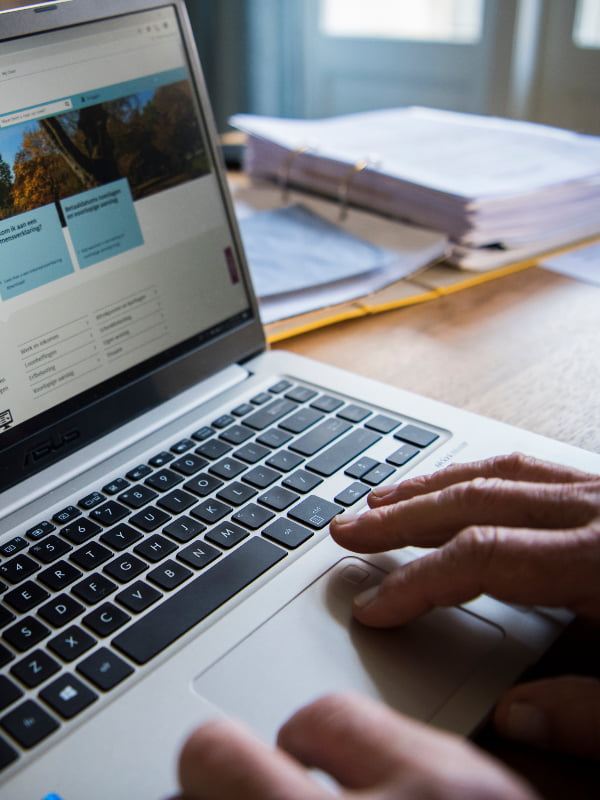Energy Saving Investigation Obligation
The Environmental Activities Decree (Besluit activiteiten Leefomgeving) requires business locations in the Netherlands that use 10,000,000 kWh of electricity or 170,000 m3 of natural gas (or an equivalent) or more per year, to investigate potential energy saving measures. The investigation focuses mainly on manufacturing processes.
Does this apply to you?
Does a business location within your organisation in the Netherlands use 50,000 kWh of electricity or 25,000 m3 of natural gas (or an equivalent) or more per year? If yes, the Energy Saving Obligation applies to your location. Here you will have to take every energy saving measure with a payback period of five years or less.
When the energy saving obligation applies, it is also obligatory to report every 4 years the executed energy saving measures to your competent authority. This is it energy saving notification obligation or the energy saving investigation obligation. The most recent deadline for submitting this report was 1 December 2023. Have you not filed your report yet? Do so as soon as possible.
Does a business location within your organisation in the Netherlands use 10,000,000 kWh of electricity or 170,000 m3 of natural gas (or an equivalent) or more per year? And are your activities described in chapter 3 of the Environmental Activities Decree (Besluit activiteiten leefomgeving)? If yes, the Energy Saving Investigation Obligation applies to your business location. If the Energy Saving Investigation Obligation applies to your business location you do not have to submit the Energy Saving Notification Obligation report for your processes and activities. Also the Recognised Energy Saving Measures List (in Dutch, Erkende Maatregelenlijst energiebesparing, or EML) is not applicable to the processes and activities on business locations that have an Energy Saving Investigation Obligation.
The Energy Saving Notification Obligation however does apply to the buildings on these locations. The EML (for buildings) can be used for that report.
How do you meet your Energy Saving Investigation Obligation?
If the Energy Saving Investigation Obligation applies to your business location, you have to investigate which energy saving measures are possible regarding your processes and activities. Energy saving measures with a payback period of five years or less have to be taken as quickly as is possible. The report has to be submitted digitally.
Step-by-step plan
- Use the step-by-step plan (in Dutch) to check if the energy saving investigation obligation applies to your organisation.
- Purchase eHerkenning assurance level 2+ to log in. Applying for eHerkenning takes five business days.
Are you a foreign company that is unable to obtain eHerkenning? An intermediary company can submit the report on your behalf.
What does the report have to contain?
The Netherlands Enterprise Agency (RVO) provides a template (in Dutch) that can be used for the investigation report. The report has to contain at least the following elements:
- A schematic overview and generic description of the location
- A description of the installations and processes
- A description and argumentation of implemented energy saving measures
- An analysis of the energy usage:
- A description of the monitoring of energy and the processes
- A visualization of the energy usage within the different elements of the processes (including an energy balance)
- A specification of unused heat flows
- A conclusion regarding the energy usage
- An analysis of the production equipment and installations, including a conclusion regarding the energetic optimalization of the equipment and installations, and:
- A scan of the technical insulation
- An analysis of the electrical drive systems
- A reflection on the base list of energy saving measures
- For IPPC-locations: a description of the implementation of the best available techniques (BAT)
- An inventory of cost-effective CO2 reducing measures
- Including a description and calculation of the energy reduction, the CO2 reduction and the payback period
- The base check Energy management
- An implementation plan
With this report you need to list and describe your installations and processes, including the corresponding energy usage. You analyse this to identify cost effective measures to reduce energy usage and CO2 emissions. For the analysis of the technical insulation, the electrical drive systems and certain base measures, you can use templates provided by RVO. You need to describe your plan of action in the report. Contact your environment agency if you have questions regarding your plan of action.
Energy saving measures with a payback period of five years or less need to be put in an implementation plan. You also need to describe the way you handle energy management within your organization. RVO also asks you to report which energy saving measures you have taken between 2021 and 2023. The Dutch National government will use this information to comply with an obligation from the European Commission to report these measures.
Does your business location have a certification or quality label?
Some certifications and quality labels reduce the number of elements that the Energy Saving Investigation Obligation report needs to contain. The report is different for locations with one of the following certifications or quality labels:
- An ISO 50.001 certification, or an ISO 14.001 certification in combination with ISO 14.051;
- Level 2, 3 or 4 on the CO2 performance ladder;
- Approved Sustainability (Erkend Duurzaam) Plus or Premium;
- CO2 reduction management, with ISO 14.001, on any level;
- CO2 & Energie RI&E Creatieve Industry, level 3 en 4;
- Fastlane with EED additions.
If your business location holds any of these certifications or quality labels, you only need to include elements 3, 6 and 8 in your investigation report. You will have to include a specification of unused heat flows (element 4). From element 5 you will include:
- The scan of the technical insulation;
- The analysis of the electrical drive systems;
- The reflection on the base list of energy saving measures;
- The energy saving measures that were identified based on these three enquiries.
Do you possess a quality label? Then you also include the base check energy management (element 7). Only an ISO certification exempts you for this element.
Per chapter or section, the template lists the elements that need to be incluced in case of an ISO certificiation or quality label.
Do you also have an audit obligation under the Energy Efficiency Directive (EED)?
Does your enterprise also have to conduct an energy audit under the EED? The report for the Energy Saving Investigation Obligation has a lot of similarities the EED location report. There are also a couple of differences.
The differences are:
- The EED Audit Obligation has a broader context. The EED audit report concerns buildings, activities and commercial transport. The Energy Saving Investigation Obligation only concerns activities.
- The Energy Saving Investigation Obligation asks that you note your unused heat flows. This is not necessary for the EED audit report.
- The Energy Saving Investigation Obligation adds three elements to the inventory of cost effective measures: the scan of the technical insulation; the analysis of the electrical drive systems; and the reflection on the base list of energy saving measures.
- The calculations of the payback period of potential measures are different.
- The Energy Saving Investigation Obligation requires you to add an implementation plan for measures with a payback period of five years or less. This is not required for the EED audit report.
RVO provides a template (in Dutch) which combines the Energy Saving Investigation Obligation report with the location report for the EED Audit Obligation.
Who enforces the Energy Saving Investigation Obligation?
The competent authority is responsible for the monitoring and enforcement of the Energy Saving Investigation Obligation. In principle, this competent authority is the municipality in which your location is located. In some cases, usually with large and/or complex locations, the province is the competent authority. The competent authority has delegated these monitoring and enforcement tasks to an environment agency. As of 2023, the Energy Saving Obligation and underlying obligations are part of the standard work package of the environment agencies.
The competent authority or environment agency will retrieve your report online. They use the information to verify whether you have met the Energy Saving Investigation Obligation.
Your report may raise questions, or the environment agency might want to conduct an inspection. If you do not report on time, the environment agency may take enforcement measures. This could have financial consequences in the form of a non-compliance penalty.
More information?
• Environment agencies in the Netherlands
• Environmental Activities Decree (Besluit activiteiten leefomgeving)
Contact us for more information or read our Dutch information page.
Please note, there are several Dutch tools available (introductory videos, step-by-step plan and EML list).



